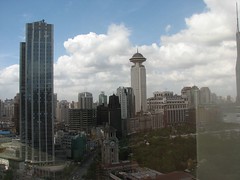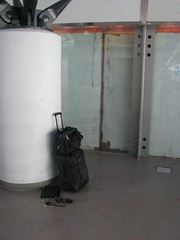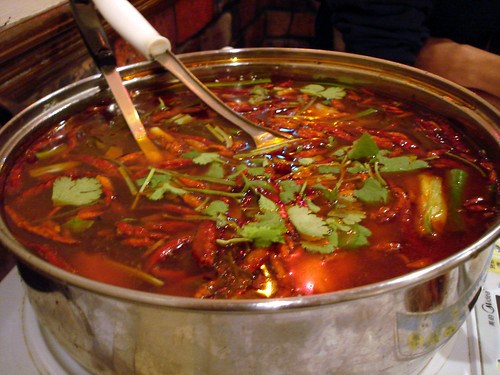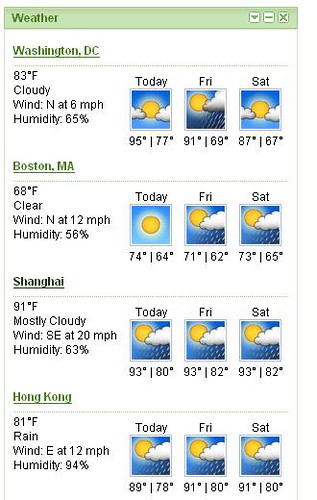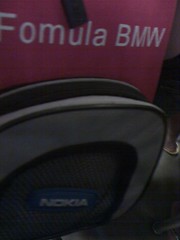Warning: the following post can be quite technical, but after coming to love my mobile phone in China, I have to rant about the US carriers: Verizon Wireless, Sprint Nextel, AT&T, and T-Mobile.
The United States is the wealthiest country in the world, yet only 65% of people have mobile phones. Only 65% you say? Isn’t that high already? I know it seems like every American teenager has a cell phone. Yes, but in Asian countries like Taiwan, Hong Kong, Korea, Japan, or European countries like the UK and Germany, more than 90% of non-infants have mobile phones. Some reasons for this are simple – like the fact that the U.S. has a large rural population that doesn’t travel far from home and doesn't see the need for cell phones. Also, our landline telephones are really good (and cheap) so the premium for mobile service is not worthwhile. But a large reason we are so far behind is because our phones and the levels of service we get from mobile carriers are terrible.
First a bit of technical background. There are two main technologies for mobile phones: CDMA and GSM. CDMA is used in the United States by Verizon Wireless and Sprint (not Nextel). GSM is used by AT&T and T-Mobile. Outside of the US, you’ll find CDMA in Korea and that’s pretty much it. Nearly every other country in the world uses GSM (except Japan, which uses their own standard – but is slowly moving towards GSM). GSM was made popular in Europe and is now the default standard for “world phones.” GSM has traditionally been a little bit behind on the development curve, so the phones with fast internet connections have been CDMA. But all GSM phones come with one key feature: the SIM card. The SIM card contains useful information about your mobile phone account like your phone number and service provider. It can also hold your address book, text messages and ringtones.
What does this mean for the mobile phone user? If you have a GSM phone, you plug in any SIM card you want and that phone will take on the rights of the subscriber that owns that SIM card. For instance, if my friend's phone is dead, he can put his SIM card in my phone and use it as his own. If I travel to Hong Kong, I can buy a SIM card with a local phone number and use the same phone I already own. Same with Europe, or the US. I now carry around a case of SIM cards, with local phone numbers in China, Hong Kong, Taiwan and the United States. GSM is also good because since most of the world uses it, most of the cell phone designs are provided for GSM first. Nokia and Motorola almost always release their GSM-type phones first. Case in point, the Apple iPhone is GSM.
Okay, so why does this make me think the US mobile carriers are so bad? One word: contracts. Every time you sign up for cell phone service in the US, you sign a contract (unless you are one of the few people who use prepaid plans.) This doesn’t sound like a huge deal, because they give you a free or heavily discounted phone in return for your loyalty. But there are two implications of this practice.
1) You don’t get to choose any phone. You have to use the phones that the phone companies sell you to make it worthwhile.
2) They lock your phone so that you can’t use your phone with any other mobile phone company.
The net effect is that we do not get to choose from as many phones in the US as in Europe or Asia because the phone companies don’t sell them. It means that Verizon makes you buy the LG and Samsungs that are used in Korea. It means you can only use the Apple iPhone with AT&T. And it means that there is very little market for used or old phones in the US. And it’s this last point that I believe keeps the US from reaching the same levels of wireless penetration as Korea. If you go to Verizon and look for the cheapest phone possible (free), it will have a camera, color screen, wireless web, etc. It will look cheap and the battery will last 3 days. By contrast, in China, I can buy a Motorola that has a black and white screen, no camera, no wireless web, but lasts 2 weeks on a battery charge and can be dropped from 4 feet up with no damage. It’ll cost me $30. Why can’t I get this phone in the US? Because the carriers will still make me sign a one year contract with a phone that I bought myself. Given the choice between free advanced phone and cheap simple phone, most people pick the free option.
And as consumers, we get stuck with contracts that lock us into bad service with phones we don’t like because there aren’t any better options out there.
